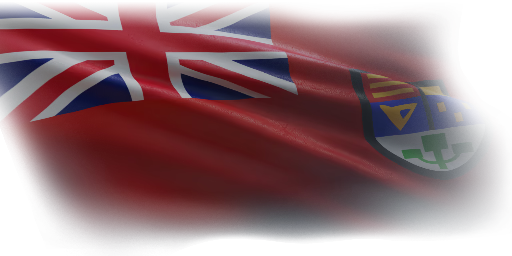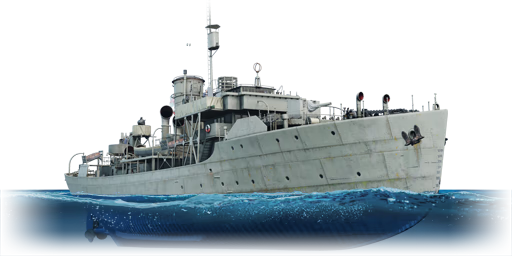




The HMCS Brantford was one of the 294 British Flower-class corvettes, a class of British small convoy escort ship designed in 1939 based on an existing civilian whaler ship design in order to simplify and hastened the production in order to protect the Atlantic convoy from Germany's U-boat fleets. Due to the urgent need for an escort, the Admiralty also placed orders for a Flower-class from a Canadian shipyard, of which some were later transferred back to the Royal Canadian Navy. After the war ended, several surplus Flower-class were sold off either to the other navies or being converted into a civilian ship.
Brantford was laid down in 1941 and commissioned a year later. She would serve uneventfully as a part of the Atlantic convoy until 1944 when she was relegated into a training ship. After the war ended in 1945, Brantford was decommissioned and sold off as a civilian ship. In a rather amusing case of coming into full circle, Brantford was converted into a Honduran-flagged whaler ship Olympic Arrow. She would later be sold in 1956 to Japanese whalers as Otori Maru No. 14 and again as Kyo Maru No. 21 before finally being scrapped in 1976.
The HMCS Brantford was introduced in Update 1.83 "Masters of the Sea" as part of the British fleet Closed Beta Test. The Brantford, like her predecessor HMS Liscomb, is an unusually tough nut to crack even against higher-tier coastal boats due to her having a detailed damage model to absorb most machine guns and autocannons. The Brantford is a direct step up from the Liscomb in every aspect, featuring twice the crew count, much less vulnerable ammo storage, improved secondary armaments, and a higher (but still low) top speed. As such, the Brantford can be effectively used as a bullet sponge to push for the capture points. However, due to her slow speed and large profile, she is still highly vulnerable to torpedoes and artillery strikes, and often requires teammates to cover her flanks.
| Ammunition | Type | Armor penetration (mm) at a distance: | |||||
|---|---|---|---|---|---|---|---|
| 1000 m | 2500 m | 5000 m | 7500 m | 10000 m | 15000 m | ||
| HE | 17 | 13 | 11 | 11 | 11 | 11 | |
| SAP | 87 | 66 | 42 | 28 | 20 | 18 | |
| Shrapnel | 20 | 17 | 12 | 9 | 7 | 6 | |
| Belt | Belt filling | Armor penetration (mm) at a distance: | |||||
|---|---|---|---|---|---|---|---|
| 10 m | 100 m | 500 m | 1000 m | 1500 m | 2000 m | ||
| HEF/AP-T/HEF/AP-T | 60 | 57 | 50 | 43 | 38 | 34 | |
| HEF/HEF/HEF/AP-T | 60 | 57 | 50 | 43 | 38 | 34 | |
| AP-T/AP-T/AP-T/HEF | 60 | 57 | 50 | 43 | 38 | 34 | |
| Belt | Belt filling | Armor penetration (mm) at a distance: | |||||
|---|---|---|---|---|---|---|---|
| 10 m | 100 m | 500 m | 1000 m | 1500 m | 2000 m | ||
| HEF-T/AP-T | 34 | 32 | 26 | 21 | 18 | 16 | |
4 × Y-gun Mk.VII depth charge











Seakeeping |
|---|
Unsinkability | |
|---|---|
Firepower | ||
|---|---|---|